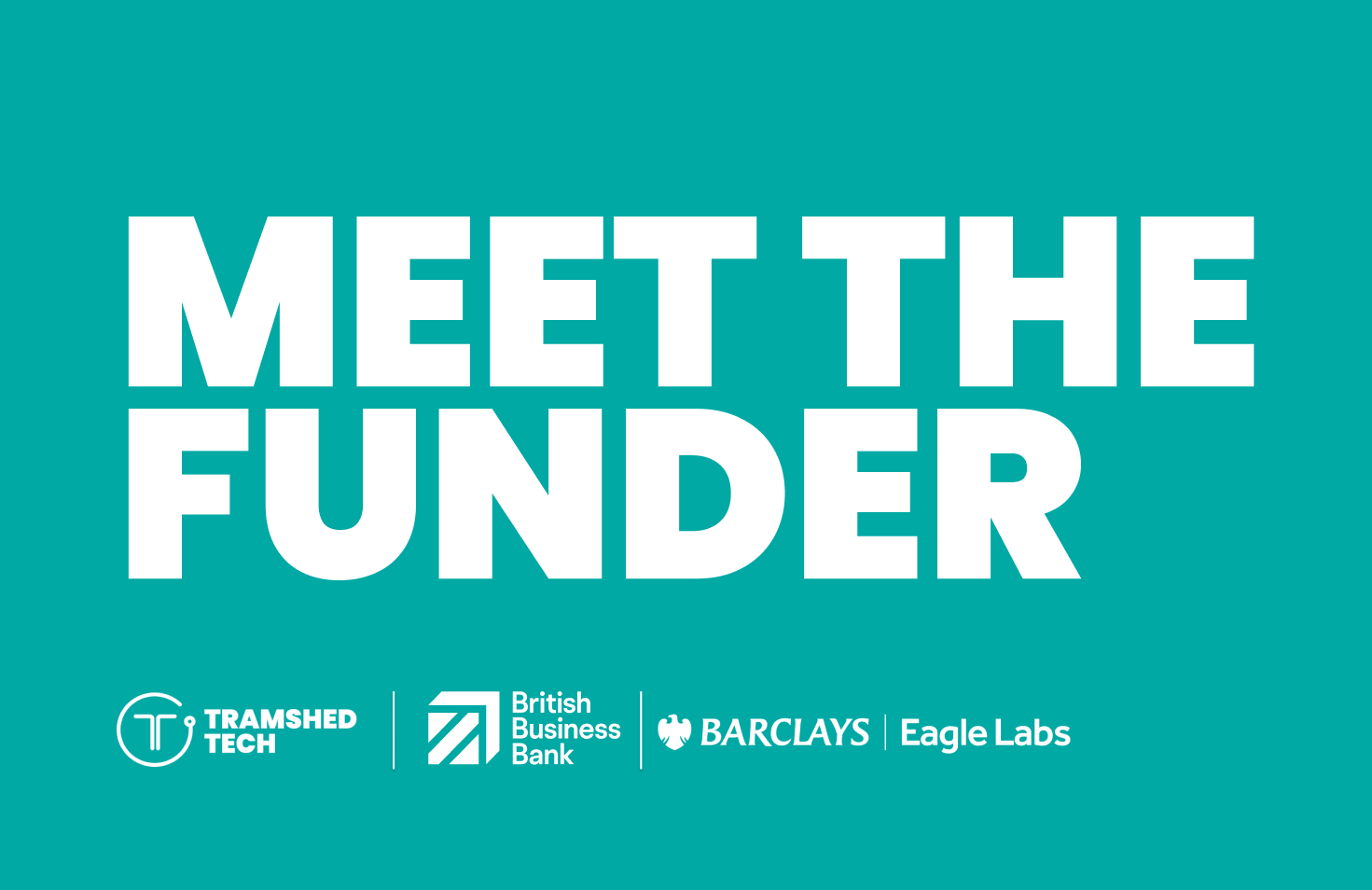We caught up with ‘Beyond Diversity: Creating an Inclusive Workplace’ this week, an event and panel discussion part of London Tech Week’s exciting ‘Future of Work Summit’ line-up back in September. The presentation’s aim was to show how technology can be used to create inclusive workplace environments, learn more here.
We caught up with ‘Beyond Diversity: Creating an Inclusive Workplace’ last week, an event and panel discussion part of London Tech Week’s* exciting ‘Future of Work Summit’ line-up back in September. The presentation’s aim was to show how technology can be used to create inclusive environments. It was led by Gori Yahaya, CEO of UpskillDigital (a learning & digital empowerment agency), and all-round inspirational thought-leader in the world of digital education. His mission? To support minorities to boost career progression and develop relevant skills for the future workplace.
‘Beyond Diversity’ was also followed up with a panel discussion with Thomas Seymour, Senior Direction at mthree; Liz Scott, Head of Entrepreneur Engagement at TechNation; Zara Nanu, CEO of Gapsquare; and Kathleen Hunter, Founder & CEO of Diversity Hunter International.
Without further ado then, to make your workplace more inclusive,
- Encourage inclusive hiring and attract diverse talent.
- Implement inclusive onboarding and establish a sense of belonging to retain talent.
- Build an inclusive culture that encourages progression.
- Practise inclusive leadership behaviours and promote education.
*London Tech Week is a global celebration of tech, uniting the industry to innovate, share, connect and drive business transformation and societal change. During a festival of virtual events, LTW brought together the best of the tech ecosystem, — from the most senior leaders and innovative thinkers, to startups and large enterprises, governments, academia and influencers, — to address the most pressing discussion points for our sector and world affairs.
1. Encourage Inclusive Hiring and Attract Diverse Talent
It starts with this: make your workplace inclusive before you’ve even made your first (or next) hire. To do this, encourage an inclusive hiring process. Instead of going for people that fit the “like-me” bias (the gravitational pull we feel towards similar people) that leads to unconscious biases, ensure that your team and hiring managers make a conscious effort to ditch their assumptions based on traits like gender and age. You will attract and retain diverse talent as a result.
This is easier said than done for a lot of people, so Gori Yahaya encourages a blind recruitment process where you anonymise the process altogether. Use gender neutral and more accessible terms (instead of he/she, go for they/them or candidate, and avoid words like “best” and “most capable”) in your own job descriptions, and then encourage applicants to emit name, gender, age, date of birth, and even educational institutions from their applicant information. There is even software that lets you do this! Blind recruitment software ensures hiring teams assess applicants based exclusively on their experience and skills.
Likewise, instead of advertising in the same places for the same job, utilise the websites and connections you have at your fingertips to advertise in more diverse hiring pools. You should even look in places where people might have non-traditional backgrounds and routes into your sector, such as government-funded boot camps or courses.
Don’t Forget Inclusive Programmes!
As well as blind recruitment practises, you should also redesign the process to create opportunities for underrepresented talent. As it stands, 85% of employers prioritise diversity, but only half have programmes to attract diverse candidates! Go beyond this: mention your commitment to inclusion in the job description and across your social media and website, but also look at starting programmes that actively encourage it.
2. Implement Inclusive Onboarding
Now you’ve broken down the barriers and hired diverse talent, cultivating an inclusive environment that genuinely embraces and empowers all is essential. At the very least, you want your employees to bring their whole self to work and thrive. Onboarding is a pivotal movement for making employees feel this from day one.
First things first, ensure all new hires are made aware of your businesses’ DNI policies, and the measures you can take if employees face discrimination. To make everyone feel safe, your employees need to know where and who to turn to.
You should also direct all of your employees to relevant support networks and employee resource groups - many of which are situated online. If you haven’t got one, think about creating one! When underrepresented talent has access to these diverse networks, everyone wins. For he employees, these provide a sense of belonging and community and an opportunity to work with the organisation to bring about change.
Gori Yahaya also recommends an online organisation chart which explains which team member has which responsibility, and how one can navigate this. Often new hires complain there is a “secret pathway to success” - so make sure they know what this pathway is. Clear navigation is crucial to comfort and successful progression.
Remember to adapt this process for work from home, or otherwise remote employees, who will complete the onboarding process away from the office.
3. Build an Inclusive Culture that Encourages Progression
And it doesn’t stop when you onboard new employees. Hiring a diverse workforce doesn’t guarantee every employee has the same opportunities in the workplace, so it is vital to help individuals integrate into a diverse workplace, but also help them thrive within it.
“Diversity is like getting a dinner invitation, but inclusion is making sure everyone enjoys the meal. When we talk about seats at a table, it’s very important that you don’t just sit, but can enjoy the meal and express how that meal is making you feel.” - Gori Yahaya.
Inclusion is what gives diversity real impact. While diversity & inclusion often go hand in hand, it’s essentially about an individual's experience.
According to CIDP, BAME employees are more likely than white employees that their career progression to date has failed to meet their expectations - and they typically cite discrimination as one of the problems. Indeed, lots of companies have stats about how many women or POC are in their business, but you also need to evaluate how they succeed. Who is moving up? Who is progressing? Your workplace needs to be somewhere minorities belong and feel safe, but also somewhere where they can actually thrive. As CIDP advises: You need to therefore understand what is happening in your organisation, identifying the structural and cultural barriers which are maintaining workplace inequalities is the first step.
Make the most of data and analytics software and toolkits to do this. Each offers actionable insights and guidance to help founders build diverse and inclusive companies, and to measure this.

Forbes: A dashboard that brings together analytics can help managers visualize and forecast diversity trends, highlighting critical diversity metrics and the impact of leadership programs. Companies can create diversity scorecards to benchmark internal trends against external metrics such as industry, location, or other parameters.
4. Practise Inclusive Leadership Behaviours and Promote Education
Finally, practise inclusive leadership behaviours and promote education. Inclusive leadership behaviours include, but are not limited to:
- Encouraging employee collaboration. Gori explained that diverse groups with diverse perspectives might struggle to get along at first, but ultimately yield much more productive results. Remember that this can still happen on Zoom, Teams, or one of the other programmes we've grown to know well over the last couple of years.
- Being open to feedback. Create an environment of psychological safety! Deep cross-cultural conversations won’t always go well - mistakes happen and people step on toes - but equip yourself and your team to better deal with these and work on those mistakes with education. In other words, don’t just practise inclusion, encourage conversation to happen. Part of this comes down to education.
- Advocating for constant education: tackle blatant and unconscious bias that marginalised groups face, as well as demonstrate how your organisation is being sensitive to these. Resources like Microsoft Teams or Slack can even be used to share articles and news around inclusion within your organisation and the world.
- Implementing the processes and systems that encourage inclusion. This might include: inclusive HR processes, appointing wellbeing champions or mental health coaches, and introducing accessible mentoring programmes and sponsorship.
While you should encourage your managers and co-workers to be more culturally intelligent (aware of diverse perspectives and the nuances that manifest in each life), and to learn about your co-workers culture and how this might influence their behaviours, Gori stresses that cross-cultural communication like this should be done in a way that helps others feel like their perspectives are taken into account. It should be inquisitive, but respectful and respect boundaries.
As a result, more people will feel included, which means more people who speak up and go the extra mile in your business, improving performance at an individual and company level.
















